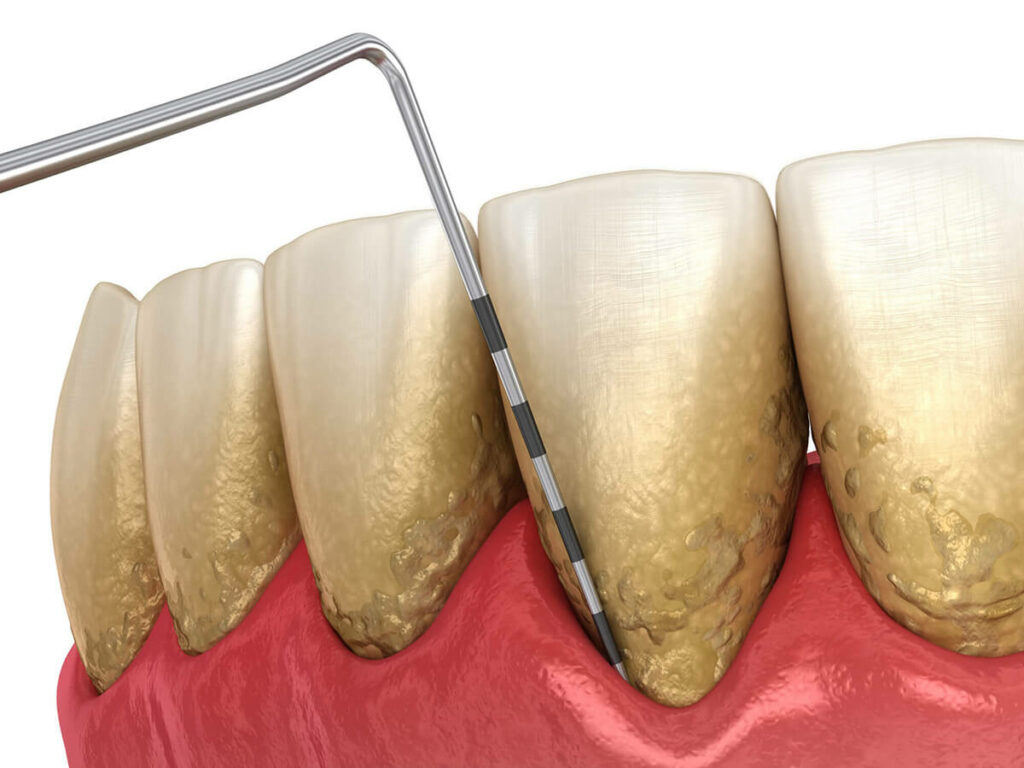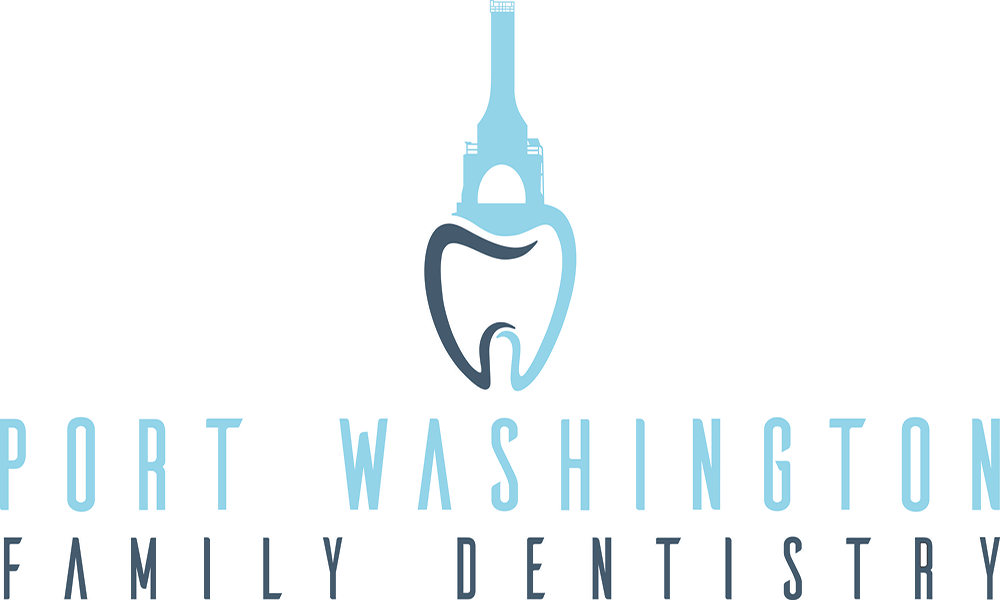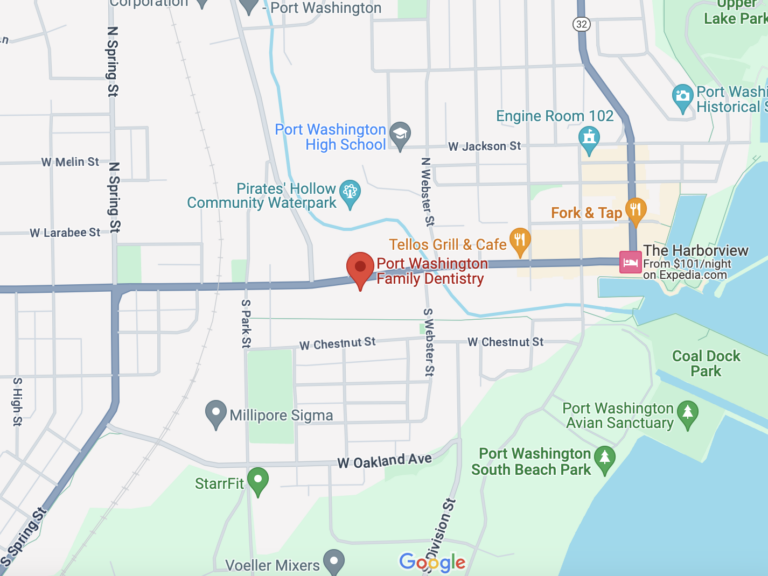Periodontal Disease Treatment (Gum Disease)
Port Washington Family Dentistry provides periodontal services for all stages of gum disease to restore your oral health. Gum disease is a serious condition that can affect anyone.
Periodontal Disease Treatment in Port Washington, WI
After establishing a diagnosis defining the severity of gum disease, we can develop a personalized treatment plan. In milder forms with little or no bone loss, one or two visits with our hygiene team may bring the condition under control. When you leave our office with a strategy for daily home care and an established schedule for maintenance, little additional treatment may be needed.
If the inflammation has advanced and measurable bone loss is evident, a proactive approach to stop further deterioration should be strongly considered. Often, we will suggest gentle numbing of your gums, and a more in-depth cleaning process sometimes called root planing or scaling. Over a few visits, a portion of your mouth at a time will be deep cleaned. The infected pocket around each tooth, including the mineralized tartar, must be carefully cleaned out with hand and ultrasonic instruments. Polishing the teeth to establish glassy surfaces that help repel stains and plaque accumulation usually finishes this initial therapy.
Dr. Adam Lysak may suggest a medicated rinse, an electric or ultrasonic toothbrush, and other specific strategies to help you with your home care routine. Remember, gum disease can be controlled but not cured. Dedicated daily efforts must be consistent to control the disease.
We invite you to learn more about periodontal disease treatment by visiting our office or giving us a call at 262-284-9011.

-
What are the signs of periodontal disease or gum dissease?
Periodontal disease, or gum disease, progresses through various stages, from mild (gingivitis) to more severe (periodontitis). Early detection and treatment are crucial to prevent its progression and protect oral health. Here are some common signs and symptoms of periodontal disease:
- Gums that Bleed Easily: One of the earliest signs of gum disease is bleeding gums, especially during brushing or flossing. Healthy gums should not bleed from these daily activities.
- Red, Swollen, or Tender Gums: Inflammation is a hallmark of gum disease. Gums might appear redder than usual, feel tender to the touch, or look swollen.
- Receding Gums: Gums pulling away from the teeth is a sign of advancing gum disease. This recession can make teeth look longer and create pockets between the teeth and gums where bacteria can collect.
- Persistent Bad Breath or Bad Taste: Chronic bad breath (halitosis) or a constant bad taste in the mouth can be caused by the bacteria involved in gum disease.
- Loose or Shifting Teeth: Advanced periodontal disease can weaken the structures supporting the teeth, leading to teeth that feel loose or shift in position, which may affect how your teeth fit together when you bite.
- Changes in the Fit of Partial Dentures: Similar to the shifting of natural teeth, periodontal disease can affect the fit of partial dentures due to bone and gum tissue changes.
- Pus Between Your Teeth and Gums: The presence of pus between your teeth and gums is a sign of infection.
- Pain When Chewing: As periodontal disease progresses, it can cause discomfort or pain during chewing due to inflammation and damage to the gum tissue and bone.
- Sensitive Teeth: Receding gums expose the roots of your teeth, leading to increased sensitivity to hot, cold, or sweet foods and drinks.
- New Spaces Developing Between Your Teeth: Advanced gum disease can lead to the loss of bone and tissue, which may cause gaps between your teeth.
It’s important to note that gum disease may be painless in its early stages, and you might not be aware of the infection. Regular dental checkups and cleanings are crucial for early detection and management of gum disease.
-
What causes gum disease?
There are three common causes of gum disease. The first and most common is chronic periodontitis. This occurs when oral hygiene is neglected, and bacteria accumulate beneath the gum line, eventually turning into a hard substance called tartar. Tartar is not easily removed by brushing and flossing and requires professional cleaning. If left untreated, the gums become inflamed and damaged, and bone loss occurs.
The second cause is aggressive periodontitis; this is believed to be a genetic condition as it shows up in a small number of families. It moves quickly and can even be seen in children.
The last and the rarest cause is necrotizing periodontal disease. This can occur in people with immune issues and or chronic diseases. A lack of blood flow compromises the soft tissue and bone.
-
How is periodontal disease or gum disease treated?
Periodontal disease or gum disease is treated in two ways. Which treatment you receive depends on the severity of your condition.
Scaling and root planning are recognized as the standard treatment for periodontitis. The procedure is highly effective in managing the condition in its early to moderate stages. It also does an excellent job of reversing its harmful effects. When providing scaling and root planing treatment, your dentist will access the areas below the gum line and between the teeth and remove harmful accumulations of plaque, tartar, and oral bacteria. Then the root surfaces will be smoothed out to prevent future accumulations. Your gums should then begin the healing process and eventually reattach themselves to the teeth.
The second treatment is called bone grafting and is often required when bacteria and plaque have reached the jawbone and caused deterioration and decay. Your dentist will need to surgically access the damaged jawbone at this stage. Your dentist will attempt to regenerate the bone by applying proteins and artificial bone-like material to the areas of decay. This will help encourage new bone growth. Bone grafting is often a necessary step for strengthening the jawbone so that it can support dental implants to replace missing teeth.
-
How do I know if I have periodontal disease or gum disease?
The first signs of periodontal disease or gum disease are red and swollen gums, gums that bleed when you floss or brush, and untreated gingivitis. Advanced signs of gum disease include loss of teeth and exposure of your tooth’s root. Periodontitis, or gum disease, can lead to tooth loss if not treated properly.
-
What is gum recession?
Receding gums affect about half of Americans over the age of 50. But, young people can experience gum recession too. You may be genetically predisposed to gum recession as some people are just born with thin gums. Other times environmental might contribute to recession. Things like aggressive brushing, trauma, surgery, or ill-fitting partial dentures and dental appliances can cause gum recession.
Treatment of Gum Recession
If you notice a tooth looks long or you experience sensitivity or pain when brushing and flossing, you could have gum recession. Be sure to make an appointment and have your dentist examine the area. If you have gum recession we can typically graft a small amount of skin from your palate and patch it over the receding area. The treatment helps protect the tooth from further damage. It is a minor procedure that can be done for a single tooth or multiple teeth depending on the need.
More Questions?
If you have any questions about periodontal disease (gum disease) treatment please contact our office and we will be happy to answer any questions.

